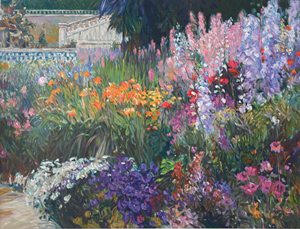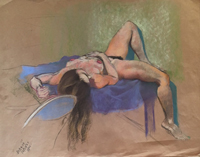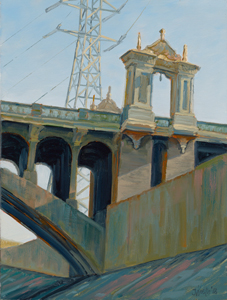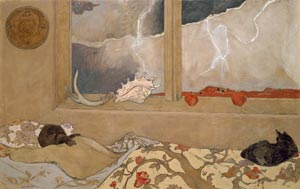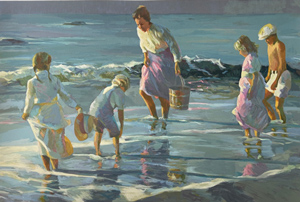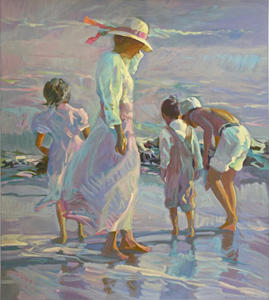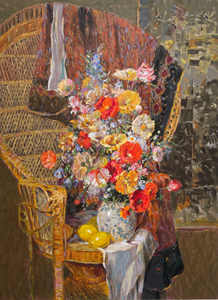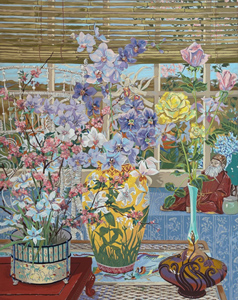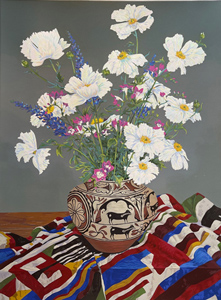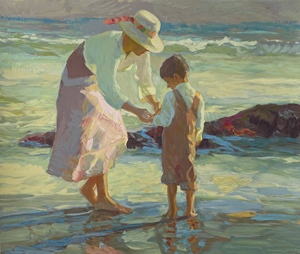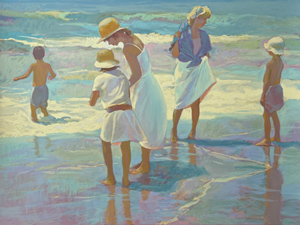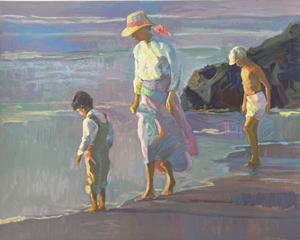
Serigraphy, also known as silkscreening or screen-printing, is the process of producing an image, or serigraph, by pressing color though a fabric stencil comprised off porous and non-porous sections. The serigraph may be produced onto a fabric, such as a t-shirt, or other material such as ceramic, paper, or wood.
Serigraphy is said to be based on the Japanese art of katazome, a form of stenciling using waterproof papers that was used in ancient Japan to copy an image. Some say however, that the art originated in the Fiji Islands where banana leaves were used as stencils. The art of serigraphy as it is known today was patented in England in the early 1900s. The first commercial use of serigraphy in the United States occurred in 1914 when John Pilsworth developed a process to produce multiple multi-color prints from a single fabric screen, which was used to make multicolored signs and posters.
Afternoon Breezes by Don Hatfield
$550.00
By the Sea by Don Hatfield
$550.00
Carole's Poppies by Henri Plisson
$550.00
Lily Vase by John Powell
$550.00
Matilaja Poppies by John Powell
$550.00
Medtierranean Garden by Henri Plisson
$550.00
Mother and Son by Don Hatfield
$550.00
Summer Holiday by Don Hatfield
$550.00
Yesterday's Memory by Don Hatfield
$550.00

 Serigraphy, also known as silkscreening or screen-printing, is the process of producing an image, or serigraph, by pressing color though a fabric stencil comprised off porous and non-porous sections. The serigraph may be produced onto a fabric, such as a t-shirt, or other material such as ceramic, paper, or wood.
Serigraphy is said to be based on the Japanese art of katazome, a form of stenciling using waterproof papers that was used in ancient Japan to copy an image. Some say however, that the art originated in the Fiji Islands where banana leaves were used as stencils. The art of serigraphy as it is known today was patented in England in the early 1900s. The first commercial use of serigraphy in the United States occurred in 1914 when John Pilsworth developed a process to produce multiple multi-color prints from a single fabric screen, which was used to make multicolored signs and posters.
Serigraphy, also known as silkscreening or screen-printing, is the process of producing an image, or serigraph, by pressing color though a fabric stencil comprised off porous and non-porous sections. The serigraph may be produced onto a fabric, such as a t-shirt, or other material such as ceramic, paper, or wood.
Serigraphy is said to be based on the Japanese art of katazome, a form of stenciling using waterproof papers that was used in ancient Japan to copy an image. Some say however, that the art originated in the Fiji Islands where banana leaves were used as stencils. The art of serigraphy as it is known today was patented in England in the early 1900s. The first commercial use of serigraphy in the United States occurred in 1914 when John Pilsworth developed a process to produce multiple multi-color prints from a single fabric screen, which was used to make multicolored signs and posters.

